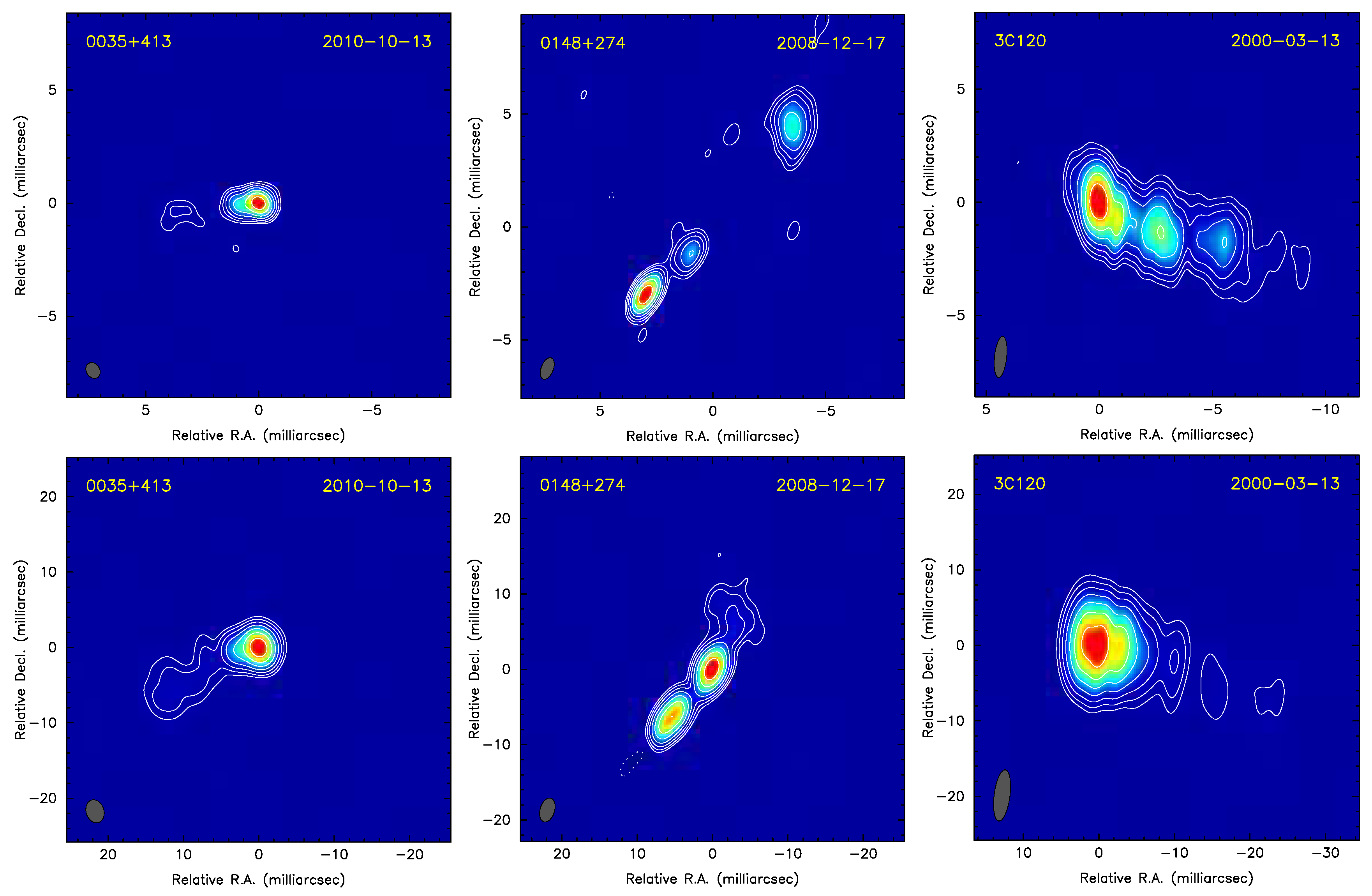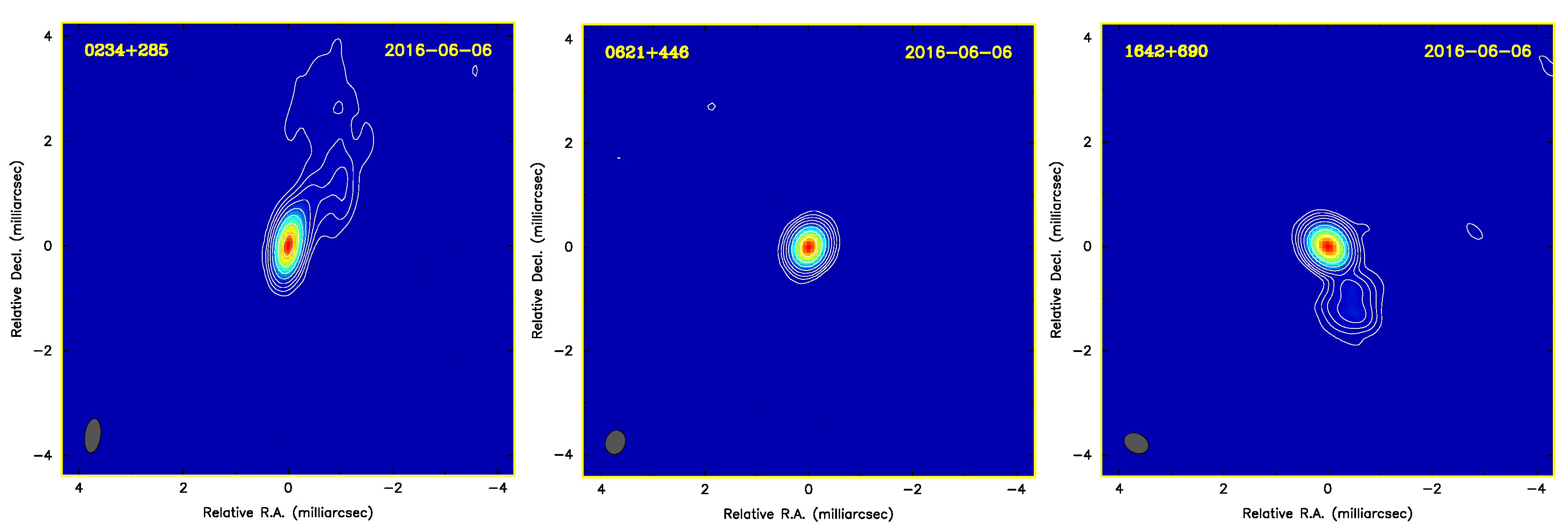
| Version | Summary | Created by | Modification | Content Size | Created at | Operation |
|---|---|---|---|---|---|---|
| 1 | Aletha de Witt | -- | 1546 | 2022-07-21 17:27:40 | | | |
| 2 | Beatrix Zheng | + 76 word(s) | 1622 | 2022-07-22 03:53:46 | | | | |
| 3 | Beatrix Zheng | Meta information modification | 1622 | 2022-07-27 08:30:49 | | | | |
| 4 | Beatrix Zheng | Meta information modification | 1622 | 2022-07-27 08:31:38 | | | | |
| 5 | Beatrix Zheng | Meta information modification | 1622 | 2022-07-27 08:33:25 | | |
Video Upload Options
The International Celestial Reference Frame (ICRF) is based on the currently accepted International Celestial Reference System (ICRS) and forms the basis for all positional astronomy in the radio domain. The first three generations of this frame have been built from high precision Very Long Baseline Interferometry (VLBI) astrometric measurements of positions of extragalactic radio sources (quasars and other radio-loud Active Galactic Nuclei, AGN), with each successive realization of the ICRF becoming more precise. VLBI angular position accuracy has now improved to near the 100 micro-arcsecond (μas) level. Catalogues of positions of extragalactic radio sources with the highest precision, such as the ICRF, are crucial to many applications, such as determining the Earth’s orientation in space, providing calibrator sources for astronomy, studying the motion of tectonic plates, and in spacecraft navigation. The ICRF also contributes towards the realization of a Global Geodetic Reference Frame (GGRF) for sustainable development, a resolution adopted by the United Nations in 2015.
1 Introduction
2. The S/X-Band Frame

3. The K-Band Frame

4. The X/Ka-Band Frame
References
- Mignard, F.; Klioner, S.A.; Lindegren, L.; Hernandez, J.; Bastian, U.; Bombrun, A.; Hobbs, D.; Lammers, U.; Michalik, D.; Ramos-Lerate, M.; et al. Gaia Data Release 2: The celestial reference frame (Gaia-CRF2). Astron. Astrophys. 2018, 616, A14. Available online: https://www.aanda.org/articles/aa/full_html/2018/08/aa32916-18/aa32916-18.html (accessed on 13 May 2022).
- Gordon, D.; de Witt, A.; Jacobs, C.S. Current CRF Status at X/S and K Bands. In Proceedings of the 12th IVS General Meeting, Helsinki, Finland, 28 March–1 April 2022; Available online: https://www.maanmittauslaitos.fi/sites/maanmittauslaitos.fi/files/attachments/2022/03/Abstarct_book_2022.pdf (accessed on 13 May 2022).
- Jacobs, C.S.; Horiuchi, S.; Snedeker, L.G.; Firre, D.; Murata, Y.; Takeuchi, H.; Uchimura, T.; Asmar, S. The JPL 2022a X/Ka Celestial Reference Frame. In Proceedings of the 12th IVS General Meeting, Helsinki, Finland, 28 March–1 April 2022; Available online: https://www.maanmittauslaitos.fi/sites/maanmittauslaitos.fi/files/attachments/2022/03/Abstarct_book_2022.pdf (accessed on 13 May 2022).
- Collioud, A.; Charlot, P. The Second Version of the Bordeaux VLBI Image Database (BVID). In Proceedings of the 24th European VLBI Group for Geodesy and Astrometry Working Meeting, Las Palmas de Gran Canaria, Spain, 17–19 March 2019; pp. 219–223. Available online: https://www.oan.es/evga2019/24_EVGA_2019_Las_Palmas.pdf (accessed on 13 May 2022).
- Laboratoire d’Astrophysique de Bordeaux (LAB), Bordeaux VLBI Image Database (BVID). Available online: http://bvid.astrophy.u-bordeaux.fr (accessed on 13 May 2022).
- Petrov, L. Radio Fundamental Catalog. Astro-geo Center. Available online: http://astrogeo.org/rfc/ (accessed on 13 May 2022).
- Hunt, L.; Johnson, M.; Fey, A.; Gordon, D.; Spitzak, J. Imaging Over 3000 Quasars That Are a Part of the International Celestial Reference Frame. In Proceedings of the American Astronomical Society Meeting Abstracts, Honolulu, HI, USA, 4–8 January 2020; Volume 235, p. 305.30. Available online: https://assets.pubpub.org/rynkboj6/71582749259388.pdf#abs305.30 (accessed on 13 May 2022).
- U.S. Naval Observatory Fundamental Reference Image Data Archive (FRIDA). Available online: https://crf.usno.navy.mil/data_products/FRIDA/frida.html (accessed on 13 May 2022).
- de Witt, A.; Jacobs, C.S.; Gordon, D.; Bietenholz, M.; Nickola, M.; Bertarini, A. The Celestial Reference Frame at K-band: Imaging. I. First 28 Epochs of K-band Images. Astron. J. 2022; under review.
- de Witt, A.; Basu, S.; Charlot, P.; Gordon, D.; Jacobs, C.S.; Johnson, M.; Krásná, H.; Le Bail, K.; Shu, F.; Titov, O.; et al. Improving the S/X Celestial Reference Frame in the South: A Status Update. In Proceedings of the 25th Working Meeting of the European VLBI Group for Geodesy and Astrometry, Virtual, 14–18 March 2021; Available online: https://www.oso.chalmers.se/evga/25_EVGA_2021_Cyberspace.pdf (accessed on 13 May 2022).
- Schartner, M.; Böhm, J. VieSched++: A New VLBI Scheduling Software for Geodesy and Astrometry. Publ. Astron. Soc. Pac. 2019, 131, 084501. Available online: https://iopscience.iop.org/article/10.1088/1538-3873/ab1820/pdf (accessed on 13 May 2022).
- Basu, S.; de Witt, A.; Gattano, C. Source Structure and Position Stability of Celestial Reference Frame Sources in the Deep South. In Proceedings of the 25th Working Meeting of the European VLBI Group for Geodesy and Astrometry, Virtual, 14–18 March 2021; Haas, R., Ed.; Available online: https://www.oso.chalmers.se/evga/25_EVGA_2021_Cyberspace.pdf (accessed on 13 May 2022).
- Soja, B.; Jacobs, C.S.; Runge, T.; Naudet, C.; Gross, R.; de Witt, A.; Gordon, D.; Quick, J.; McCallum, J.; Krásná, H. Ionospheric Calibration for K-Band Celestial Reference Frames. In Proceedings of the 24th European VLBI Group for Geodesy and Astrometry Working Meeting, Las Palmas, Gran Canaria, Spain, 17–19 March 2019; Haas, R., Garcia-Espada, S., López-Fernández, J.A., Eds.; Available online: https://www.oan.es/evga2019/EVGA2019_PDF/O316_EVGA2019_Soja.pdf (accessed on 13 May 2022).
- Jacobs, C.S.; Murata, Y.; Takeuchi, H.; Firee, D.; Asmar, S.; Uchimura, T.; Numata, K. X/Ka Network Enhanced by Misasa, Japan’s 54-meter antenna. In Proceedings of the 25th Working Meeting of the European VLBI Group for Geodesy and Astrometry, Virtual, 14–18 March 2021; Available online: https://ui.adsabs.harvard.edu/abs/2021evga.confE...3J/abstract (accessed on 13 May 2022).
- Charlot, P.; Jacobs, C.S.; Gordon, D.; Lambert, S.; de Witt, A.; Böhm, J.; Fey, A.L.; Heinkelmann, R.; Skurikhina, E.; Titov, O.; et al. The third realization of the International Celestial Reference Frame by very long baseline interferometry. Astron. Astrophys. 2020, 644, A159. Available online: https://www.aanda.org/articles/aa/full_html/2020/12/aa38368-20/aa38368-20.html (accessed on 13 May 2022).




